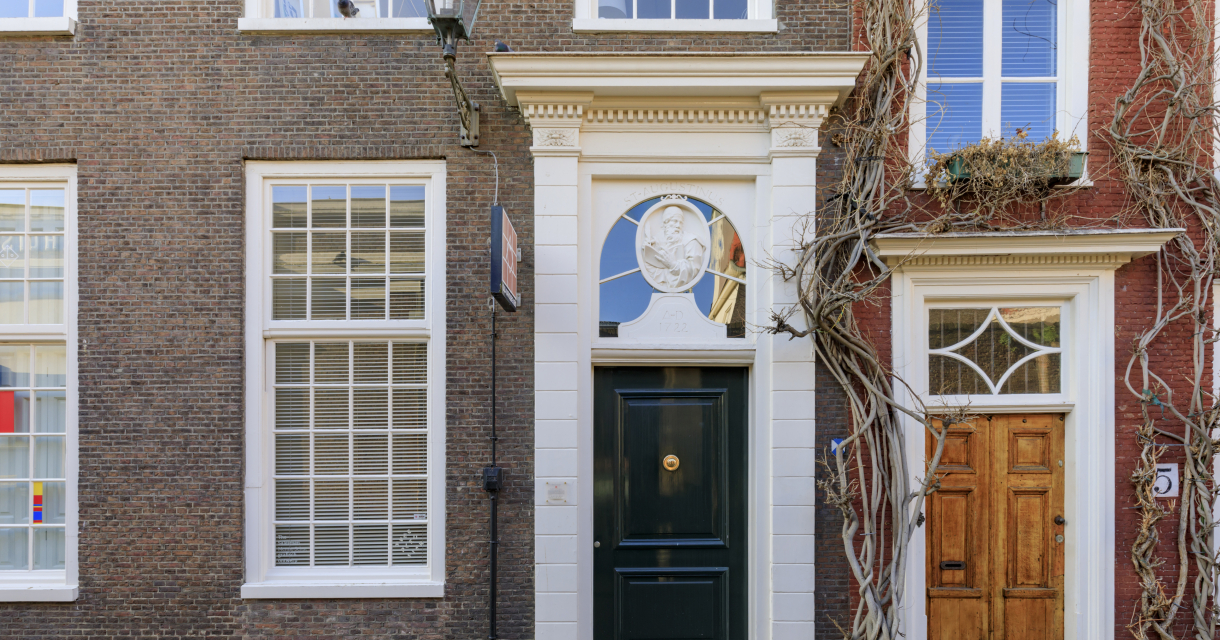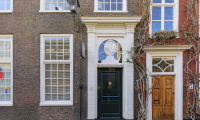
Anyone strolling quietly through the quiet Juffrouw Idastraat would never suspect that a beautiful Baroque church is hidden behind the facade of number 7: a clandestine church from the time when the Catholic Mass was banned. This gem is one of the best kept secrets in the Hofkwartier and definitely worth a visit.
Pats
We write 1578 when Protestantism becomes the religion in the Netherlands. Catholics have to retreat to attics and other secret places for their profession of faith. During this time, several clandestine churches were created in The Hague. This also applies to Juffrouw Idastraat, the street named after one of the so-called knocks. In those days, these are the women who knock on Catholics' doors to warn them when a secret mass is being held.
Church behind the front house
A century later, the ban on Catholicism has been relaxed somewhat, but Mass may not yet be celebrated in full view. Pastor Willem Frederik van Dalenoord, who reads masses in his attic room, is allowed to build a new church behind the front house of Juffrouw Idastraat 7. He has to pay a large sack of money for this, but then you also have something: a beautiful white church full of ornaments with a richly decorated oak pulpit, an imposing altarpiece, a beautiful trompe l'oeil, a cove ceiling with Italian stucco, probably by Josef Bollina, and many more breathtaking.
Inspiration by Marot
The church is inaugurated on December 20, 1722. That must have been a celebratory event. The hidden church is not quite ready yet, it will take another ten years to build, but the base is there. Nicolaas Kruysselbergen is probably the master builder. He was expressly inspired by the then famous architect Daniël Marot, who also bears the name of the Old Town Hall.
The construction is quite a family affair, because two brothers van Kruysselbergen make the altar cabinet and the painting. Matthias Terwesten, a successful artist at the time, was hired for the impressive painting.
Rich decorations
The pulpit dates from 1728, but has since been changed. Jean Baptist Xavery initially designs three medallions with faith, hope and love on them, which he later replaces with four Christmas scenes, supplemented with little angels. In 1743 Pieter van der Speck then interfered with the sounding board, which he modified and decorated even more exuberantly.
Also striking is the marble baptismal font that stands behind a richly ornamented, hand-forged fence and is accompanied by a rare pewter Easter candlestick. Also look to the right: what looks like a relief is – really! – a painting by Jacob de Wit. His works of art are called 'Whites' in his time, he is so famous for his trompe l'oeils.
Organ unit
One of the showpieces is the organ of Rudolph Garrels, of which only three exist. This example, the oldest organ in The Hague, dates from 1727. It has been through a lot. When other ideas came to life about an organ sound, a romantic instrument by Spit was placed in the secret church in 1910. The main work of the Garrels organ ends up in the Mariakerk in Vollenhove and the back work at the Nederlandse Protestantenbond in Zeist.
When the Vollenhoven church changes hands in 1976, the main work becomes available again. The back part also appears to be able to come back. Organ fanatics collect the awe-inspiring amount of more than 6.5 tons in guilders and bring this unique instrument as a unit, completely restored from 1994, back to sound in its original place.
Old Catholic
The hidden church is an old Catholic church. At the time when this clandestine church is being built, there is a blistering tension between the Dutch Catholics and Rome. The Dutch want more self-government, but the Pope does not like that. Here in the Bishop's Room on Juffrouw Idastraat, the room in front of the hidden church, a rift develops in the Catholic Church. This happened in 1723, exactly one year after the hidden church was put into use. The cause is the fact that a bishop is appointed in Utrecht, which the Vatican is firmly against. The Old Catholics still form their own group, although the relationship with the 'ordinary' Catholics has been completely restored.
Accessibility
The Old Catholic secret church of the H.H. Jacobus en Augustinus is located in the center of The Hague and is easily accessible by various means of transport. The car offers a solution for visitors from outside the city, via the N44, A4, A12 and A13. Parking is possible at the parking garages nearby. In addition, the Old Catholic hidden church is also accessible by public transport. From Central Station there are several options to get to the hidden church. Tram 1 and 17 stop near the Old Catholic hidden church of the H.H. James and Augustine.

